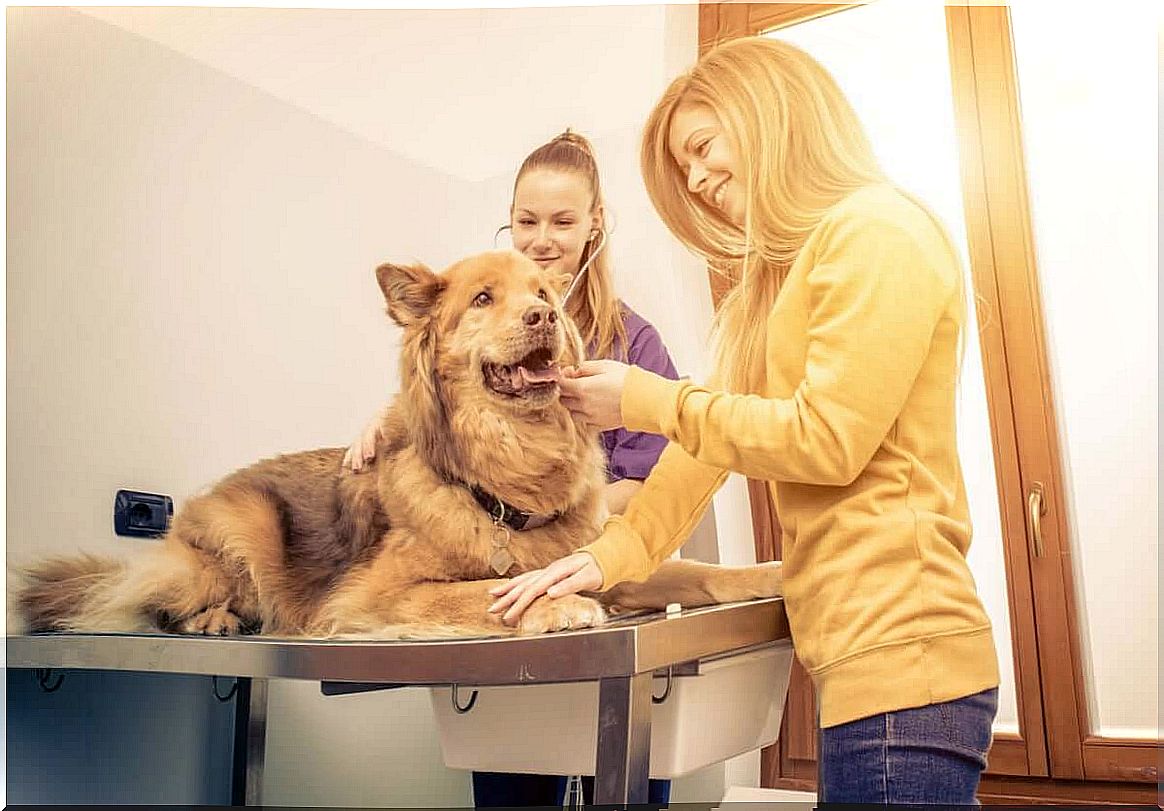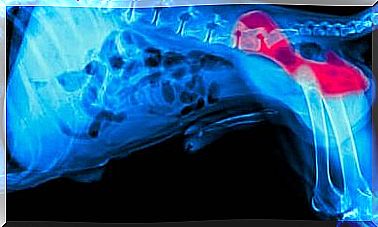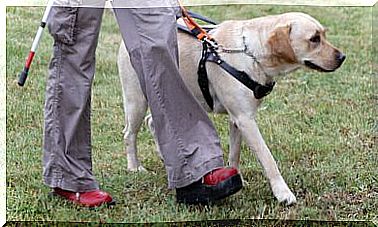Diseases That Cause Breathing Difficulties In Dogs

There are numerous pathologies that trigger respiratory distress in dogs. History, symptoms, and physical examination are usually sufficient to determine which areas of the respiratory system are involved. In this way, the veterinarian can be more effective in determining a proper diagnosis.
For this, the respiratory tract is divided into several areas: airways, lung parenchyma (tissue that makes up the organ) and pleural space. If you want to know more about this world of canine pathologies, read on.
Diseases that cause breathing difficulties in dogs
Next, we’ll talk about a number of pathologies that affect the respiratory system and cause breathing difficulties.
Upper respiratory tract pathologies
First, the upper airways are made up of the nostrils, mouth, pharynx, glottis and epiglottis. Pathologies affecting these organs usually present with abnormally loud breath sounds. This is what is known as a stridor or rales and is audible without the need for a stethoscope.
As a general rule, respiratory discomfort originating in the upper airways results from an obstruction. Symptoms get worse during exercise or when the dog is agitated, because the narrowing of the pathways increases. However, at rest, respiratory parameters can become almost normal.
Many patients with these pathologies come to the veterinary clinic with recurrent episodes of fever. This makes thermoregulation ineffective because, during wheezing, the volume of air that passes through the tongue is insufficient.
Furthermore, the rise in temperature starts a vicious cycle. Stimulates increased respiratory rate and wheezing, further narrowing the airways.

What are the most common causes of obstruction?
It is important to note that brachycephalic breeds (such as bulldogs or pugs ) are genetically predisposed to having blocked upper airways. Some of the most common causes of these obstructions are as follows:
- Paralysis of the larynx.
- Collapse of the trachea.
- Polyps or tumors in the lumen of the upper respiratory tract.
- Aspiration of foreign bodies.
Lower respiratory tract pathologies
In this case, the larynx, trachea, bronchi, bronchioles and alveoli may be affected. The most common is that they are abnormalities of the bronchi and bronchioles, of inflammatory origin, with cough being the most common clinical finding. It is usually a strong cough and tends to exacerbate inflammation, creating a new vicious cycle.
What are the most common causes of respiratory distress?
Normally, there is an obstruction of the airways closest to the lung due to increased mucus production. This mucus builds up and weakens the rest of the respiratory system. Therefore, it is common for the picture to be complicated by bronchopneumonia.
Among the most common causes of these pathologies are:
- Canine chronic bronchitis.
- Foreign bodies or masses in the lumen of the lower respiratory tract.
Pathologies of the lung parenchyma
Any disease that affects the lung will have varying degrees of hypoxia (lack of oxygen in the blood) and therefore difficulty breathing. This is due to an imbalance in ventilation due to inflammation or closure of the alveoli.
On auscultation, it is common to hear abnormal breath sounds, such as crackles. The dog’s heart also needs to undergo careful examination to detect signs of congestive heart failure.
What are the most common causes?
We will present the most common causes of diseases of the lung parenchyma:
- Pneumonia, there are several types. For example, aspiration pneumonia after vomiting.
- Pulmonary edema and hemorrhage, Ultimately, an abnormal accumulation of fluid in the lung. Typical, for example, of congestive heart failure.
- Pulmonary thromboembolic disease.
- Tumors.
Pleural space pathologies
The pleural space is defined as the virtual gap between the chest wall and the chest organs. It is virtual because there really is only one true space in the case of pathology, that is, in the case of fluid or air unduly accumulating in its interior.
This will lead to some degree of pulmonary dysfunction with increased respiratory rate and dyspnea. Also, when listening to the chest, lung and heart sounds will be diminished or muffled. Why? Because there is a foreign substance occupying this virtual space and pulling the organs away from the chest wall.
Pleural effusions are classified according to the type of fluid contained. One of the most common is hemothorax (accumulation of blood) after an accident, or pneumothorax, for example, when a rib breaks through the chest wall and allows air to enter.

Protecting Canine Breathing
In fact, accurately diagnosing the cause of this problem is a real challenge for the veterinarian. The possibilities are almost endless and many times several things happen at the same time, especially when it comes to an infectious disease.
Therefore, performing complementary tests, such as analysis or radiographs, can be the best allies for a professional who wants to discover the reasons for respiratory distress in dogs.









